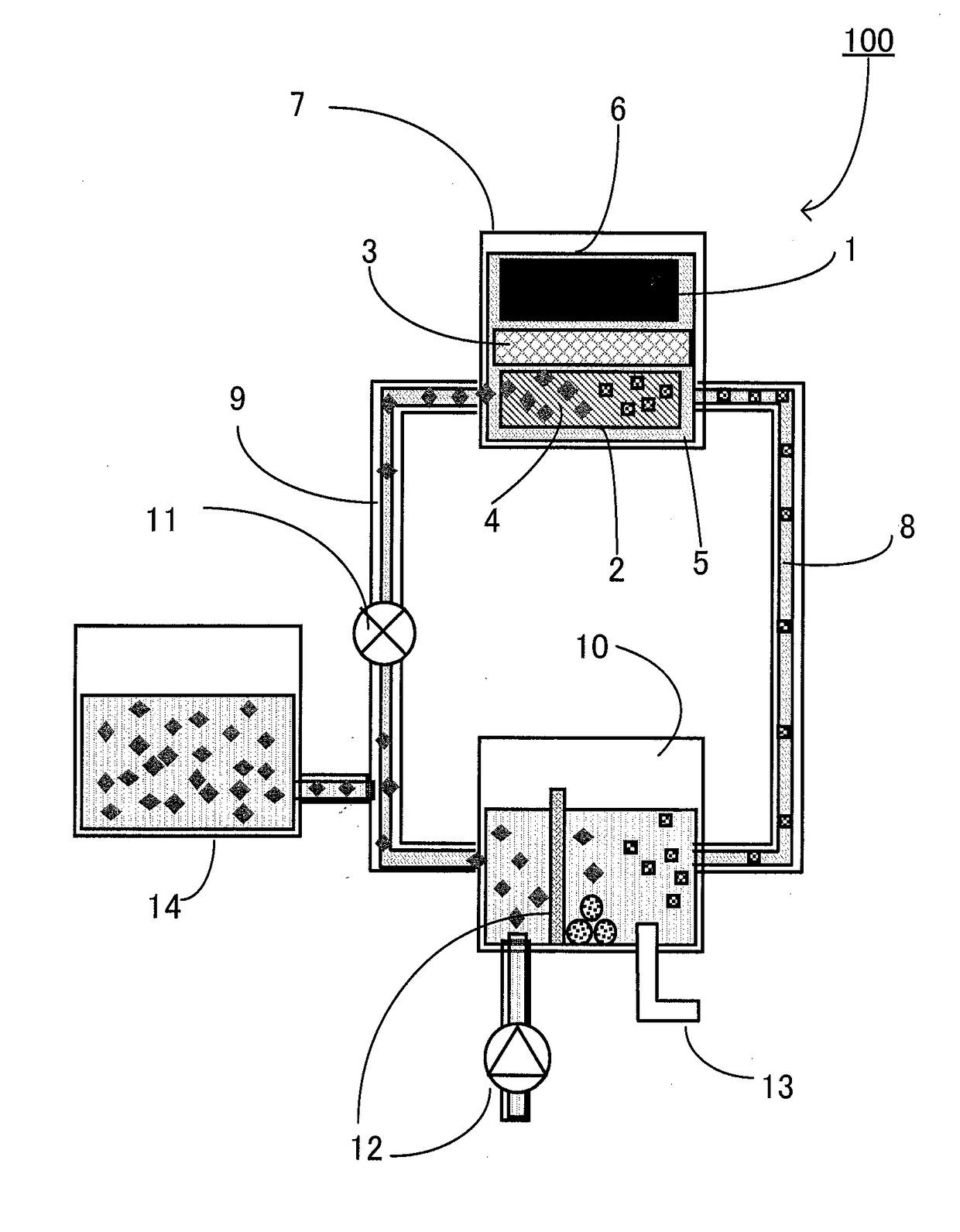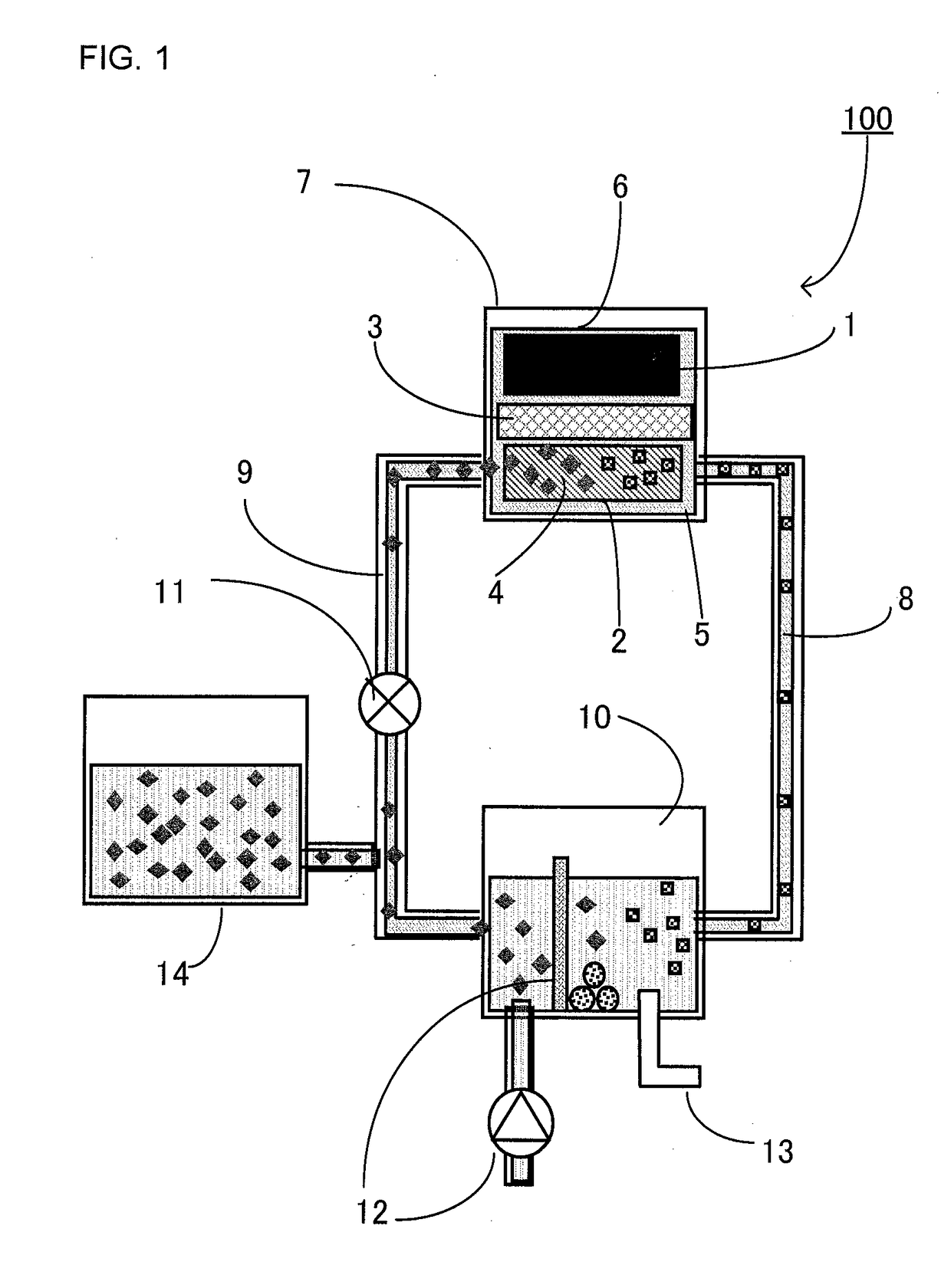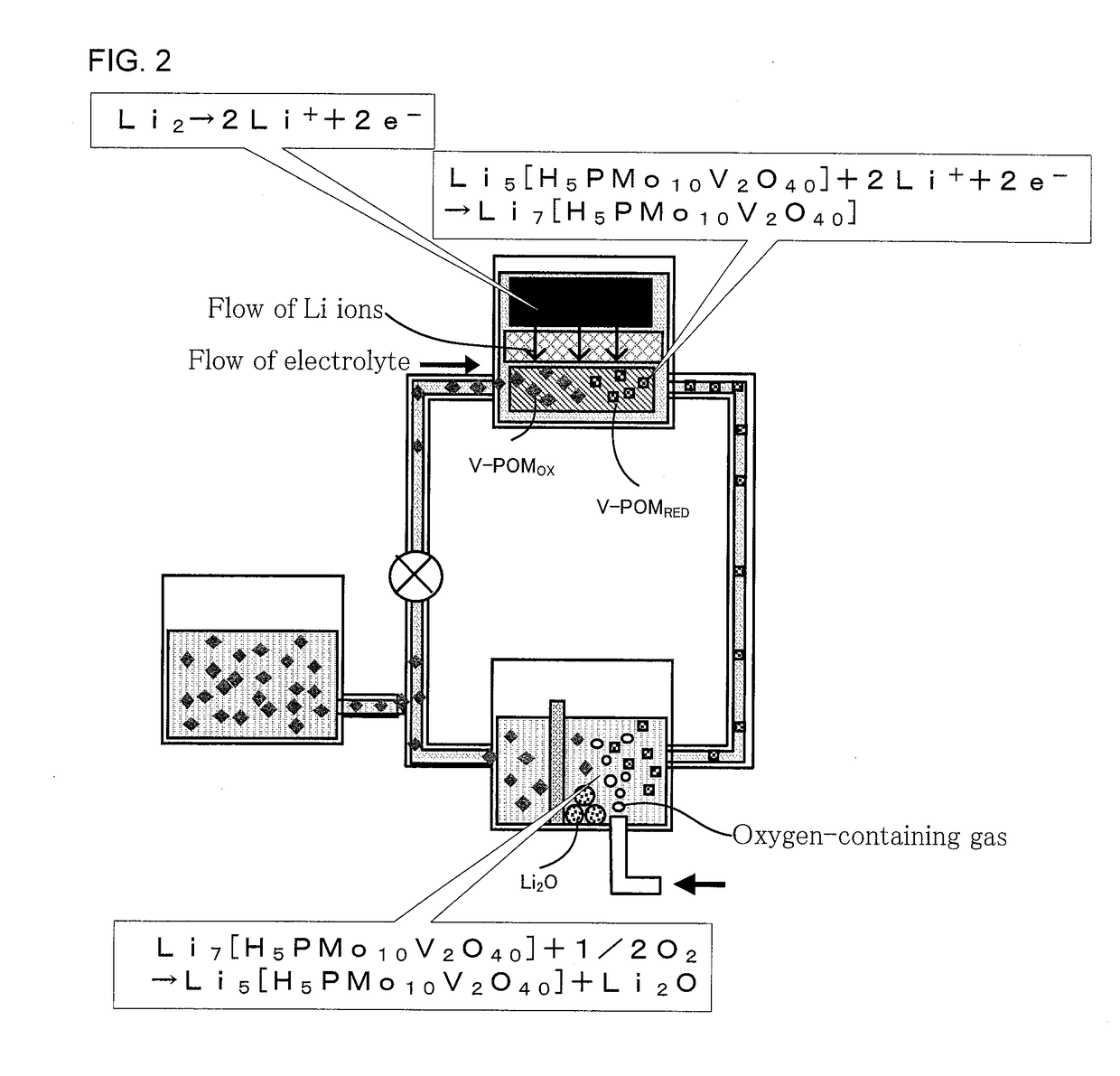Flow battery
a flow battery and flow current technology, applied in the field of flow batteries, can solve the problem of a decrease in power output of flow batteries
- Summary
- Abstract
- Description
- Claims
- Application Information
AI Technical Summary
Benefits of technology
Problems solved by technology
Method used
Image
Examples
first example
[0063]When the size of the lithium-containing deposits is in micrometers to millimeters, as shown in FIG. 3, a filter may be disposed in the trap. As the filter, metal mesh, carbon paper, carbon cloth, filter paper or the like may be used.
[0064]If the pore diameter or porosity of the filter is too large, the lithium-containing deposits cannot be efficiently trapped. If the pore diameter or porosity is too small, the back pressure of the electrolyte increases. Therefore, the pore diameter and porosity of the filter are determined depending on the size of the lithium-containing deposits and the circulation rate of the electrolyte.
[0065]The pore diameter of the filter may be in a range of 500 nm to 2 mm or may be in a range of 1 μm to 5 μm.
[0066]The porosity of the filter may be in a range of 50 to 90% or may be in a range of 60 to 80%.
second example
[0067]When the lithium-containing deposits are submicron or below in size, as shown in FIG. 4, an electrolyte withdrawal valve may be disposed in the trap. In addition to the electrolyte withdrawal valve, a separator for separating the lithium-containing deposits from the withdrawn electrolyte and trapping the separated lithium-containing deposits, may be disposed in the trap. As described above, due to the pore diameter or porosity problem, the filter being able to trap the lithium-containing deposits being submicron in size, increases the back pressure of the electrolyte. Therefore, it is not suitable to dispose the filter in the trap.
[0068]Therefore, it is suitable that the electrolyte withdrawal valve is disposed in the trap to withdraw the electrolyte to the outside; the electrolyte and the lithium-containing deposits are separated from each other; and then only the electrolyte is returned to the flow battery.
[0069]The electrolyte and the lithium-containing deposits may be sepa...
third example
[0071]When the size of the lithium-containing deposits cannot be supposed or varies depending on discharge conditions, as shown in FIG. 1, the filter and the electrolyte withdrawal valve may be disposed in the trap.
[0072]As a result, the number of the components constituting the trap is increased, thereby increasing the size of the system. However, it is particularly effective when the flow battery is used under the condition that it is difficult to suppose the type or size of the lithium-containing deposits produced upon the chemical oxidation of the mediator.
PUM
| Property | Measurement | Unit |
|---|---|---|
| power | aaaaa | aaaaa |
| energy density | aaaaa | aaaaa |
| chemically stable | aaaaa | aaaaa |
Abstract
Description
Claims
Application Information
 Login to view more
Login to view more - R&D Engineer
- R&D Manager
- IP Professional
- Industry Leading Data Capabilities
- Powerful AI technology
- Patent DNA Extraction
Browse by: Latest US Patents, China's latest patents, Technical Efficacy Thesaurus, Application Domain, Technology Topic.
© 2024 PatSnap. All rights reserved.Legal|Privacy policy|Modern Slavery Act Transparency Statement|Sitemap



